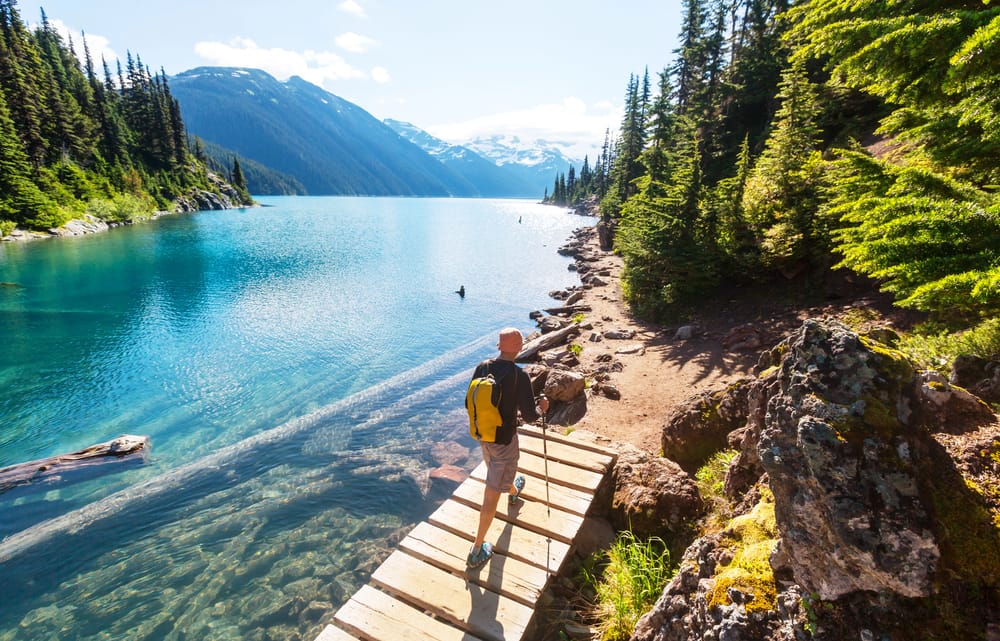Canada’s Summer Resorts and Adventure Hubs You Need to Visit
Living in Canada on a working holiday is not just about winter ski seasons (though they are epic). When the snow melts, the mountains come alive in a completely different way: stunning lakes, lush green meadows, buzzing resort towns, and adventure activities that run late into the long summer nights. Whether you are into hiking, biking, paddling, festivals, or just soaking up the mountain-town lifestyle, summer in Canada might be the best-kept secret for travellers on a working holiday visa.

In this guide, we will break down some of Canada’s most exciting summer resorts and adventure hubs, the places where you can land seasonal work, make new friends, and build a lifestyle that blends steady income with non-stop adventure. Plus, we’ll show you how to set yourself up smoothly, with visa support, the right insurance, and a little app that keeps everything organised while you focus on exploring.
Whistler, British Columbia
Whistler is the crème de la crème of Canada’s resort towns. Just two hours from Vancouver along the breathtaking Sea-to-Sky Highway, it is famous as one of the largest ski resorts in North America. Once the snow melts, the mountains take on a completely different character. The slopes turn into a summer playground filled with lakes, hiking trails, mountain bike parks and long evenings that spill over into outdoor festivals, concerts and lazy patio sessions.
The town itself has a big international flavour, with accents from all over the world carried through the cafés, bars and restaurants. Seasonal staff keep things buzzing, and while the summer vibe is more laid-back than the hectic winter ski season, Whistler never really slows down. There is a steady line-up of live music, outdoor dining and community events that make it feel alive day and night. It is the kind of place where you can hike in the morning, dive into a lake in the afternoon, and end the day with friends over a drink as the sun sets.
If you are heading to Whistler for a working holiday, pack for variety. You will want lightweight gear for hiking and biking, swimwear for the lakes and a few warmer layers for evenings. There are plenty of jobs on offer too, from hotels and restaurants to bike park operations and lakefront rentals. The work is fast-paced and social, but with your days off feeling like mini-holidays, it hardly feels like a grind. Summer runs from June through September, with July and August bringing the warmest weather and busiest crowds. September is quieter, with cooler nights and emptier trails, which makes it a great time to explore without the crowds.
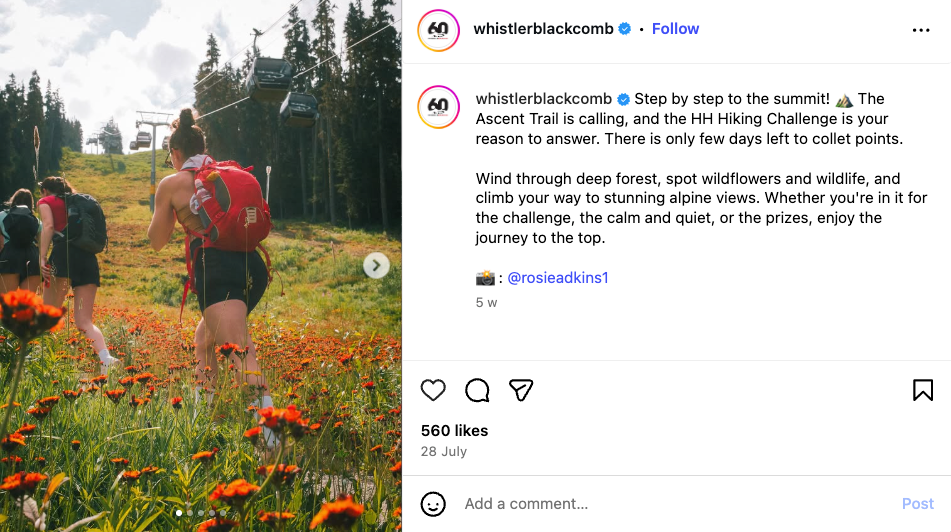
Local Events & Extras
- Crankworx Festival: The biggest mountain biking event in the world, complete with parties, competitions and concerts. This is one you do not want to miss: a 10-day festival that attracts more than 300,000 people.
- Whistler Farmers’ Market: Sundays are for fresh produce, artisan goods, and live music. With over 60 vendors, there is a little something for everyone.
- Outdoor concerts at Olympic Plaza: Free shows all summer long - say less!
How to Get There
Fly into Vancouver International Airport, then take a shuttle or drive the scenic Sea-to-Sky Highway. If you are working in Whistler, many employers provide staff housing or help with finding accommodation.

Banff, Alberta
Banff is the beating heart of the Canadian Rockies, set right in the middle of Banff National Park. Banff is surrounded by mountains on all sides, with trails and lakes close enough that you can head out exploring as soon as you’re off work. It is easily Canada’s most famous mountain town, and once you’ve wandered its streets or stood at the trailheads, it’s obvious why.
The vibe here is a mix of small-town charm and constant buzz. The community is young, international and outdoorsy, so it doesn’t take long before you’re swept into BBQs by the river, group hikes, or lake days that stretch into late evenings. Work is steady and social, whether you are in a hotel, restaurant or guiding outfit, and on days off it is just as easy to stay local as it is to jump in a car and head to nearby icons like Lake Louise or Moraine Lake.
For a working holiday, you’ll want hiking boots that can take a beating, swimwear for those bracing lake dips and a jacket for the mountain storms that roll in without warning. The jobs can be full-on, especially in hospitality, but with so much packed into your downtime it rarely feels like a grind. Summer runs from June through September, with July and August at their busiest. Early summer is great for trail exploring with waterfalls in full flow, while September slows the pace and lights up the forests with autumn colour.
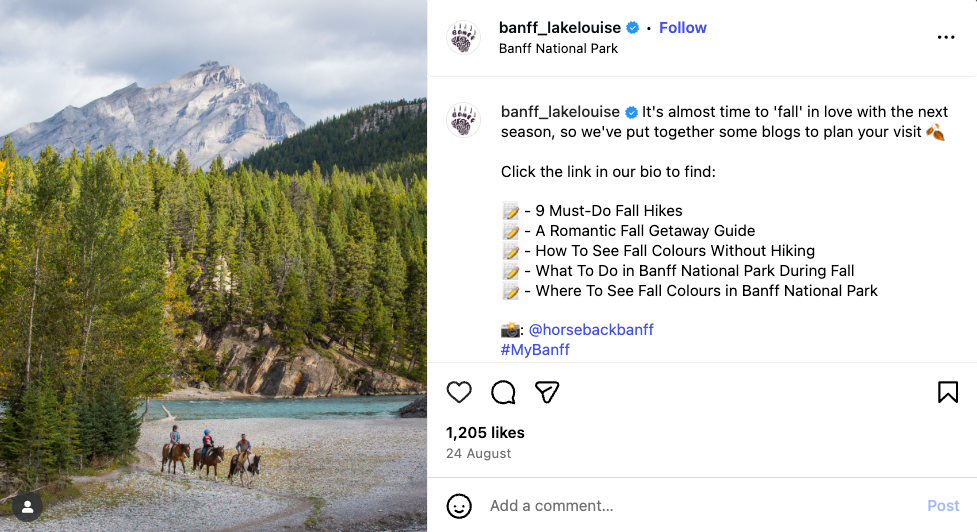
Local Events & Extras
- Banff Summer Arts Festival: A blend of music, theatre and visual arts, featuring over 65 ticketed performances and more than 35 free events each summer. It brings creative energy to the mountains in a big way.
- Canada Day (1 July): A full day of parades, live music and fireworks, with the whole town coming together to celebrate one of the most festive times of the year in the Rockies.
- Mountain Film & Book Festival (late summer): A world-class gathering of adventurers, authors and filmmakers, with 70–80 films showcased during the festival and the film tour attracting tens of thousands worldwide.
How to Get There
Fly into Calgary, then take a bus or drive about 1.5 hours to Banff. Staff housing is common in hotels, making it easier for working holiday travellers to settle in.

Jasper, Alberta
Location & Overview
Jasper is further north than Banff and has a much quieter feel. The town sits inside Jasper National Park, the largest park in the Rockies, and it feels a little more off the beaten track. It’s smaller, less touristy and has a slower rhythm, which makes it easy to settle into if you’re planning to stay for a season. The bonus of being tucked away is that you’ll often find yourself with more space on the trails and fewer crowds at the local spots.
The vibe is laid-back and outdoorsy. Locals and seasonal workers mix easily because most people are there for the same reason: to enjoy the mountains and make the most of the long summer days. Jobs are similar to Banff, with plenty of options in hospitality, guiding and retail, but the pace is less hectic and the atmosphere more personal. Friendships come quickly, often through staff hikes, BBQs by the river or evenings around a campfire. You’ll notice that Jasper has more of a “community feel” than some of the busier resort towns, which can make it easier to feel at home.
If you’re heading to Jasper, bring proper hiking gear for full days on the trails, warm layers for the cool nights and swimwear for dips in Maligne Lake or Pyramid Lake. July and August are the busiest months, but September is the best-kept secret. The town is calmer, the trails are quieter and the larch trees turn a striking golden colour that makes the scenery feel completely different. With fewer visitors around, it’s one of the easiest times to enjoy Jasper at your own pace.
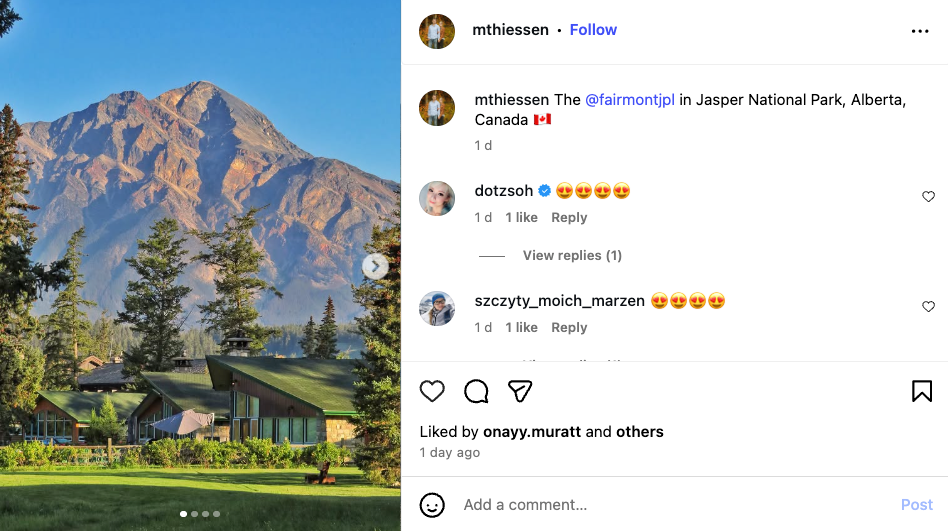
Local Events & Extras
- Dark Sky Festival (October): Jasper is one of the largest Dark Sky Preserves in the world, and the festival draws thousands of visitors each year for stargazing events, telescope sessions and talks with astronomers.
- Jasper Folk Music Festival (early September): A weekend of live bands, indie acts and a buzzing festival vibe on the edge of town. With food trucks, local beer and a friendly crowd, it’s a perfect way for travellers to wrap up summer in the Rockies.
How to Get There
Fly into Edmonton or Calgary, then take a bus or train to Jasper (about 4–5 hours). Employers often provide staff accommodation, so you will not need to worry about finding a place straight away.

Kelowna & the Okanagan Valley, British Columbia
Kelowna and the Okanagan Valley have a completely different vibe from the Rockies. Instead of alpine trails, you’ve got long sunny days on the lake, rolling vineyards and a lifestyle that mixes beach days with wine country. The mountains are still in the background, but here it’s all about summer living. It’s the kind of place where one day you’ll be paddleboarding before work and the next you’re road-tripping to a lakeside town for a wine tasting.
The culture here is more relaxed and summery compared to the busier resort towns. Seasonal work is easy to find in vineyards, restaurants and resorts along Okanagan Lake, and the pace of life is more about soaking up the sun than rushing between shifts. On days off, people head out on wine tours, spend hours on the water or explore nearby spots like Penticton and Vernon. The community is a mix of locals, students and travellers, so it feels social without being overwhelming.
If you’re planning a season in Kelowna, pack light summer clothes, plenty of sunscreen and swimwear because you’ll spend a lot of time outdoors. Jobs often line up with the tourism season, so you’ll find openings in hospitality, wineries and water sports rentals. The best time to go is June through September. July and August are perfect if you’re chasing hot weather, busy beaches and nightlife, while September is harvest season, a little cooler, less crowded and ideal if you love wine.
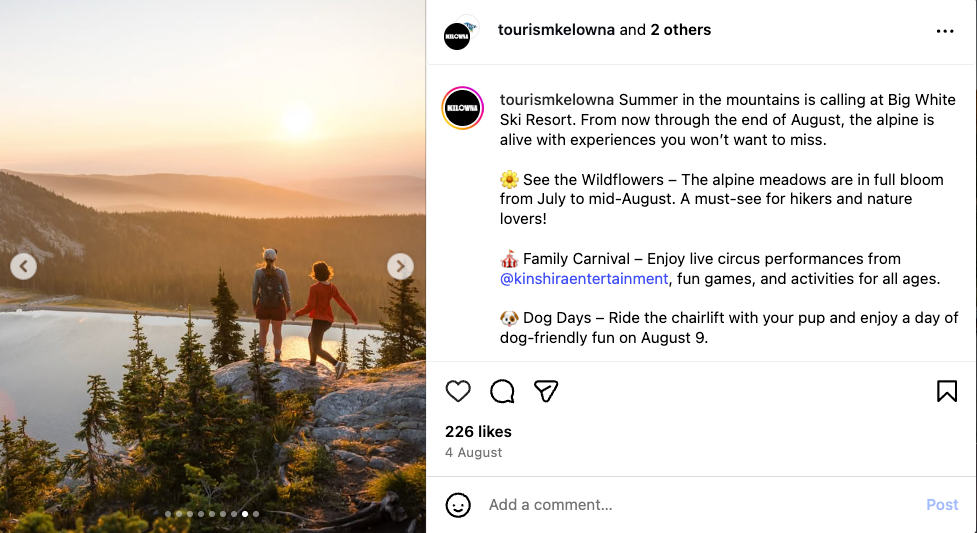
Local Events & Extras
- Kelowna Wine Festivals: A summer-long celebration of the Okanagan Valley, with tastings, winemaker dinners and live music drawing wine lovers from across Canada.
- Kelowna Music on Bernard (July–August): When the city shuts down Bernard Avenue to traffic, it becomes a buzzing pedestrian zone filled with street performances, pop-up stages, food stalls, and live music nights against Okanagan Lake. It’s a favourite summer hangout for locals and travellers.
How to Get There
Fly directly into Kelowna International Airport, or bus or drive from Vancouver (about 4 hours). Accommodation can be pricier in peak season, so staff housing is valuable if your employer offers it.

Mont Tremblant, Quebec
Mont Tremblant is Quebec’s go-to mountain town, sitting just an hour and a half from Montreal. It mixes alpine adventure with French-Canadian culture, which makes it feel a little different from the western resorts. You still get lakes, trails and mountain views, but they come with cobblestone-style streets, French cafés and a European-style village that feels worlds away from the Rockies.
The atmosphere in summer is lively and social. Festivals run through the warmer months, the lakes are busy with swimmers and paddlers, and the nightlife has more of a European energy than you’ll find elsewhere in Canada. Travellers come here for a mix of culture and the outdoors, so the crowd is a blend of adventure-seekers and city escapees. Jobs are easy to find in the resorts, restaurants and shops, and if you’re into guiding there are opportunities in Mont Tremblant National Park. Be ready for a bilingual environment, English is widely spoken, but French is a big part of daily life, which makes it a fun spot to pick up a few phrases.
If you’re planning to work a season here, pack for humid summer days, cooler evenings and do not forget bug spray. The best time to come is between June and August if you want the full buzz of festivals, events and long lake days. September is a little calmer, and it’s also when the forests turn bright with autumn colours, which makes it one of the most memorable times to experience Tremblant.
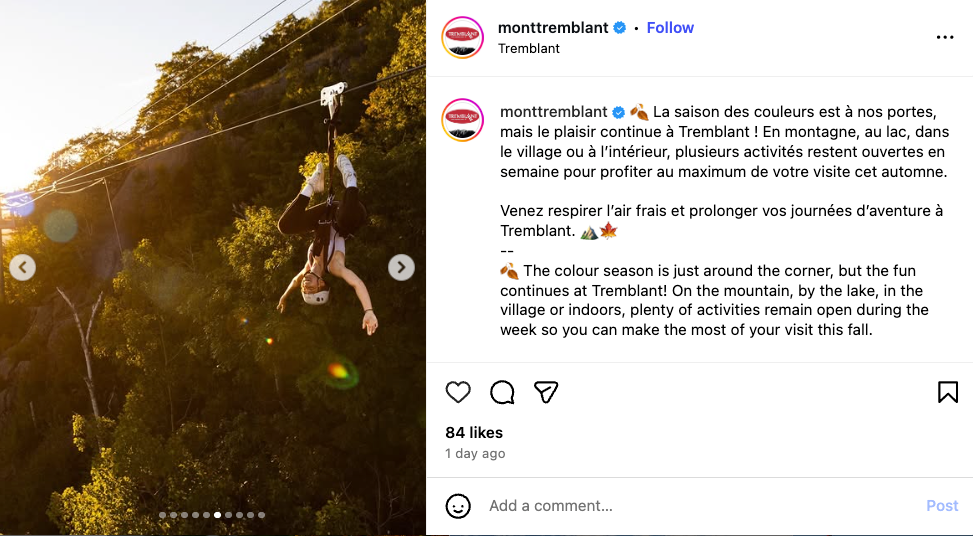
Local Events & Extras
- Tremblant International Blues Festival: Ten straight days of live music, with more than 100 free concerts scattered across the pedestrian village. The whole resort turns into one big open-air stage, drawing crowds of music lovers from around the world.
- Ironman Mont-Tremblant: Watch thousands of athletes take on one of the toughest triathlons in the world, swimming, cycling and running through Quebec’s dramatic mountain scenery. The atmosphere is electric, and the after-parties are legendary.
- Les Rythmes Tremblant: A free summer concert series that runs all season, bringing local and international acts to outdoor stages. Perfect for grabbing a drink, soaking up the vibe and dancing under the stars with new friends.
How to Get There
Fly into Montreal, then take a shuttle or drive to Tremblant. Some seasonal employers provide staff housing in or near the pedestrian village.

Tofino, British Columbia
Tofino is tucked away on the west coast of Vancouver Island and is often called Canada’s surf capital. Instead of mountains and lakes, here it is all about long beaches, rolling waves and that easygoing coastal lifestyle. It is one of the country’s most popular summer spots, with travellers coming for the mix of nature, surf and small-town charm.
The vibe is relaxed and creative, with a mix of surfers, artists and seasonal workers filling the town. In summer, the streets are lined with backpackers and working holiday travellers picking up jobs in cafés, restaurants or surf shops. The community revolves around the ocean, with early morning surf sessions, afternoons in the salt air and evenings watching sunsets on the beach. It is social without being hectic, and the pace makes it easy to fall into a routine of work and play.
If you are planning a season in Tofino, bring a wetsuit if you want to surf because the Pacific stays cold even in summer. Most jobs are tied to tourism and hospitality, so expect plenty of openings during the busy season. When you are not working, downtime is all about the coast, whether it is surfing, beach walks or simply relaxing by the water. Summer is the peak time to be here, and while it does get busy, the mix of surf culture and coastal living makes it a unique place to spend a season.
Best Time to Go
June to August for warm weather and buzzing energy. September offers great surf and fewer crowds.
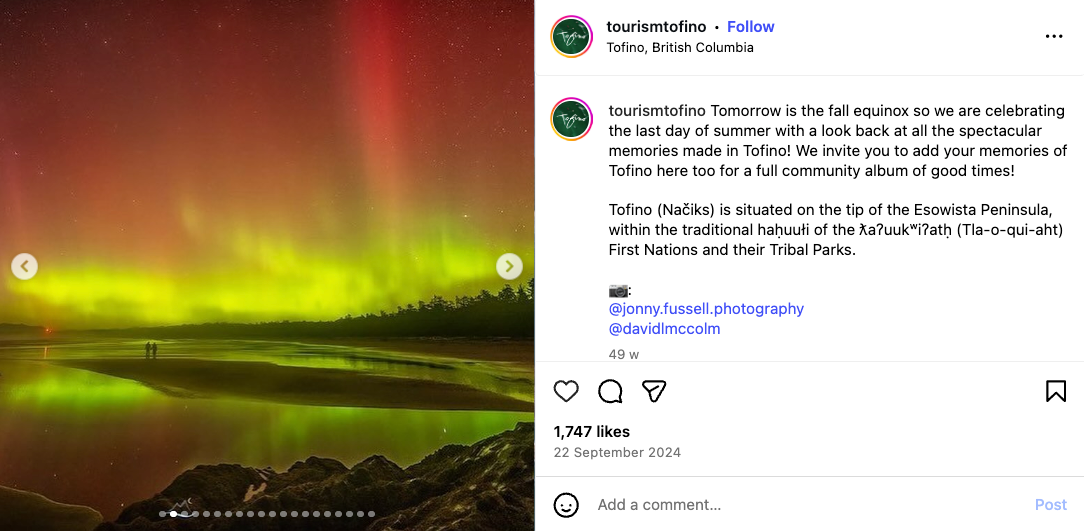
Local Events & Extras
- Tofino Food & Wine Festival: A celebration of Vancouver Island’s coastal flavours, with local chefs, craft brewers and winemakers serving up their best. Expect tastings, beachside dinners and a young crowd that blends good food with west-coast vibes.
- Pacific Rim Whale Festival (spring): Marking the return of nearly 20,000 grey whales that migrate past the coast, this festival combines marine conservation events, live music, and a buzzing small-town atmosphere.
- Endless beach bonfires and community events: Summer in Tofino is all about nights around the fire with guitars, new friends and starry skies. From surf-inspired gatherings to outdoor markets and arts events, the community vibe is strong and welcoming for travellers.
How to Get There
Fly into Vancouver, then take a short flight to Tofino or a bus and ferry combination (about 6–7 hours). Accommodation is limited, so staff housing is a huge perk.
Why a Working Holiday Makes Summer Resorts Even Better
Summer in Canada’s resorts is not just about visiting. It is about living there. On a working holiday visa, you can spend weeks or months in these towns, earning money while exploring every trail, lake, and festival. Hospitality, tourism, and outdoor companies hire hundreds of working holiday travellers each summer, making it easy to land seasonal roles.
Read our Complete Guide for Canada’s Working Holiday Visa.
How Global Work & Travel Makes It Easy
Heading to Canada for a working holiday is exciting, but let’s be honest, it can also feel overwhelming. Between visas, jobs, accommodation, and all the little things you don’t even realise you need yet, it’s easy to burn through savings or feel stuck. That’s where we step in. Think of us as that friend who’s already done it all before, giving you the shortcuts so you don’t waste time or money.
Here’s what you get with us:
- Job Match Guarantee: Land a Canadian job before you arrive, with options across resorts, summer lodges, hotels, cafés and tourism gigs (often with perks like staff housing, ski passes or meals).
- Second Country Job Match: Keep the adventure going with a job lined up somewhere else after Canada.
- Trip Essentials Sorted: Visa help, flights, insurance, tax numbers, bank accounts, and your own dedicated Trip Coordinator to guide you through it all.
- Arrival Support: Airport transfer, a few nights of hostel accommodation, a “Welcome to Canada” orientation, and extras like a Vancouver tour, Whistler day trip, or even an overnight in Las Vegas (depending on your pack).
- Community & Connections: Meet fellow travellers before you go through our SuperLite app, join Global side-trips and events, and tap into ongoing local support once you’re there.
- Added Perks: Access to the Global Academy, Marketplace discounts, permanent accommodation resources, tax return help, and an emergency line.
Some of our top packs and picks:
Working Holiday in Canada (Plus)
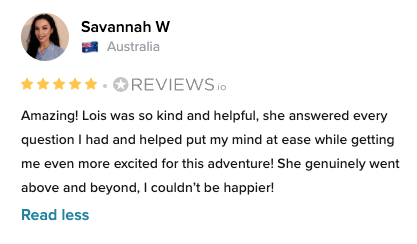

Final Thoughts
From Whistler’s bike parks to Banff’s breathtaking lakes, from Tremblant’s festivals to Tofino’s surf breaks, Canada’s summer resorts are as world-class as its winter slopes. For young travellers on a working holiday visa, they offer something even better: a lifestyle where you can earn money, meet people from all over the world, and spend every spare moment outdoors.
At Global Work & Travel, we are here to make it happen. With our Visa Packs, adventure-ready insurance, and SuperLite app, you will have the support you need to turn Canada’s summer resorts into your backyard.

Jessie Chambers
Jessie is a globetrotter and storyteller behind the Global Work & Travel blog, sharing tips, tales, and insights from cities to remote escapes.




